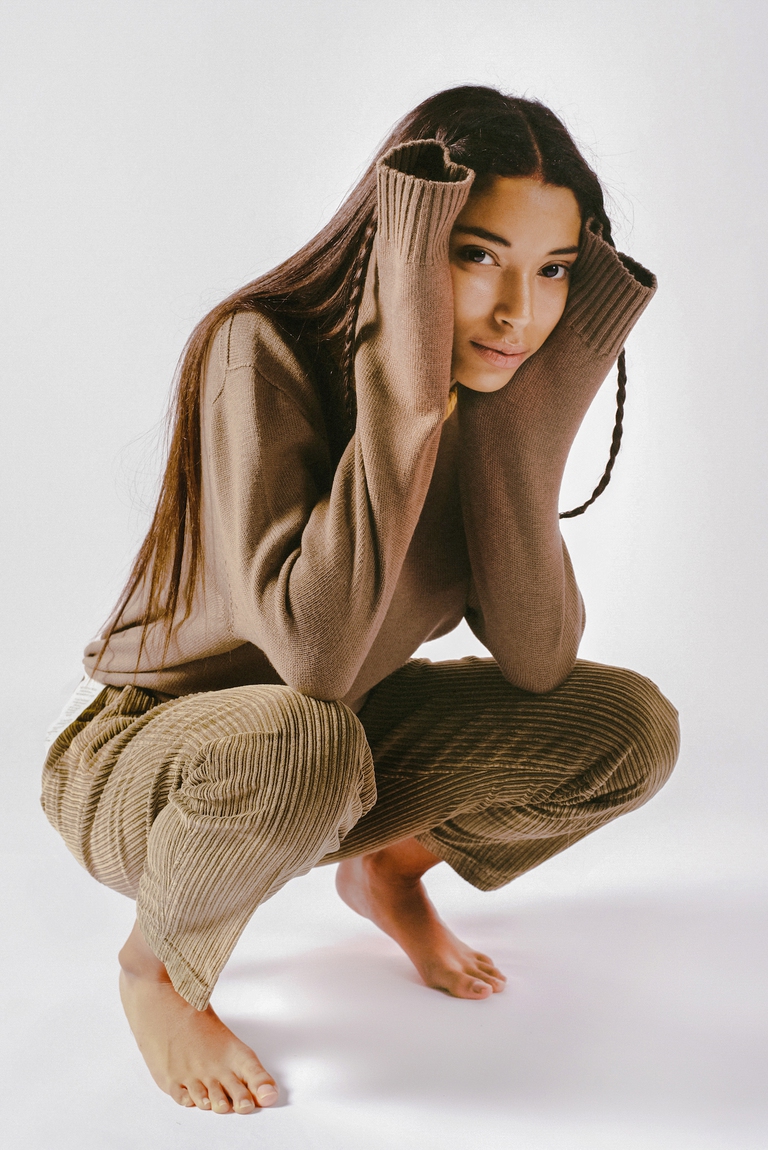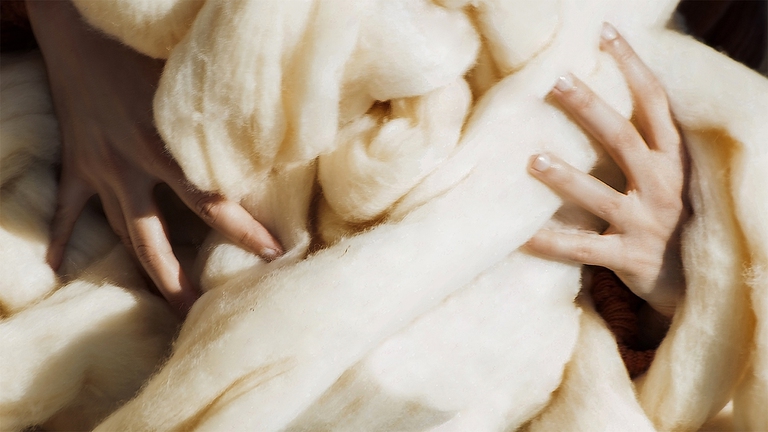https://www.lifegate.it/wuuls-startup-maglieria-abruzzese
- |
- Wuuls is a knitwear startup born from the idea of two brothers, Emanuela and Francesco, determined to bring resources and work to their region of origin.
- The brand uses 100 percent Abruzzo wool from the Gran Sasso Park and then vegetable dyed.
- A percentage of their revenues is allocated to associations active in the protection of the territory and its biodiversity.
The world of textiles is a jungle and it is not easy to navigate between products and producers, good practices and greenwashing, but where there is purity of intent and seriousness there is hope.Between the most promising Italian startups on the front of the sustainable textile there is this small reality that has made of proximity and stay local your mantra:is called Wuuls and produces clothes starting exclusively from wool from the Gran Sasso Park.

Wuuls values
Two brothers are leading the project, Emanuela and Francesco Picchini:both from Abruzzo, they studied and worked outside and then returned "home" and tried to do something good, for the environment and the local economy.Emanuela has a background in design, both university and work (she was employed in a knitwear company before starting her own business) while Francesco studied economics:in the last year they have also arrived Matthias, which deals with communication, e Valentine, who is a management engineer.Everyone has chosen to work hard for something they believe in, but also to bring value to their land.“It all started when I came across some women from an association active here in the Gran Sasso Natural Park:they collected local wool and from there the idea was born of being able to take this material, which is typical of the region where I grew up, and use it for textile use to produce semi-industrialized garments, while previously this type of fiber was only used for handmade knitwear,” says Emanuela.
The production process is important in order to evaluate the sustainability or otherwise of a brand, but also attention to design it has its own considerable weight.“Our garments are very basic, the more timeless a piece is, the longer its life is likely to be. Durability is at the heart of our design concept:ours are those classic sweaters that you keep in your wardrobe your whole life.For us, success is that our products can be passed down from generation to generation."

Where does wool come from?
All the wool used by Wuuls is 100 percent Abruzzo:it comes from fleeces from farms that grow completely in the national park.“We do not produce the fiber directly, but we use a supplier, which is Valeria Gallese's company, entirely located within the park.She is the owner of the farm and responsible for the very first processing:at every stage the maximum respect for the flock, That grazes freely in the open air.The is still in use here transhumance:the wool is raw in the true sense of the word, the animals are in such contact with nature that their coat inevitably becomes dirty and thickens.Absolutely no type of treatment is practiced on animals mulesing – a practice used mainly in Australia which consists in the removal of the tail and a part of the anal and perineal tissue of the sheep to prevent the fleece from becoming dirty with excrement – a trivial procedure which is prohibited in Europe, but which is still practiced in many parts of the world. All the raw material used is therefore localised, but then it is spun in the Biella area, which is the only Italian district where the raw material continues to be transformed into yarn.From the second collection onwards we also introduced linen garments, which is always produced in Italy and always spun, because in any case the main concept of the brand is that of knitwear".
In this story there is not only the strong bond with the territory, but also the desire to take back a raw material that is highly performing.“We wanted our product to tell a story, that of the region in which I was born and raised, but also to make use of traditional techniques, such as vegetable dye with very ancient pigmentations:a dyeing use that is typical not only of Abruzzo, but of all of Italy.Many people dye with eco-dyes today, but Vegetable dyeing requires different steps:in fact, it is assumed that all the pigments used are of organic, and not chemical, origin:this translates into different nuances from bath to bath and into hypoallergenic products that do not disperse chemical substances during washing carried out at a later time by the consumer.From this point of view our garments do not disperse microplastics, because they do not have synthetic components of any kind, nor even small particles of dyes.In the first collection we dyed with two materials: the ford and the shake it.The first is a blue dyeing pigment that derives from a plant of very ancient origin that is grown mainly in the Marche region:we compost it, dry it and then reduce it to powder.The other, however, is a type of foliage that grows spontaneously in all the Apennine regions and which gives a brownish colour, close to dove grey".

The protection of the Marsican bear
Beyond the collection and processing of the raw material, the bond with Abruzzo is very strong for the Wuuls boys who are committed to donate part of their proceeds to local associations active in the protection of the territory.“It can be said that ours is a short supply chain:we manage to take the raw material, spin it and dye it within three very localized regions, but the connection with the territory is not limited to this, because 5 percent of the proceeds from the two collections produced to date have been donated to associations very active locals in the park who aim to protect the biodiversity of the area.A project that we have supported and to which we are very attached is the redevelopment of the pasture corridor:a very important initiative for the protection and survival ofMarsican bear.
Through the restoration of wildlife corridors by this small association, many of the problems this species encounters, linked to excessive anthropization, are stemmed.For example in these wildlife corridors acoustic protection systems are installed to ensure that animals do not get too close to inhabited areas and thus do not incur accidents due to the presence of man.Another initiative that we supported was the pruning of the orchards in the area, an activity that in and of itself may not seem like such a striking intervention, but which ensures that these fruit trees grow and prosper, representing an asset for the entire system of biodiversity of the park".

